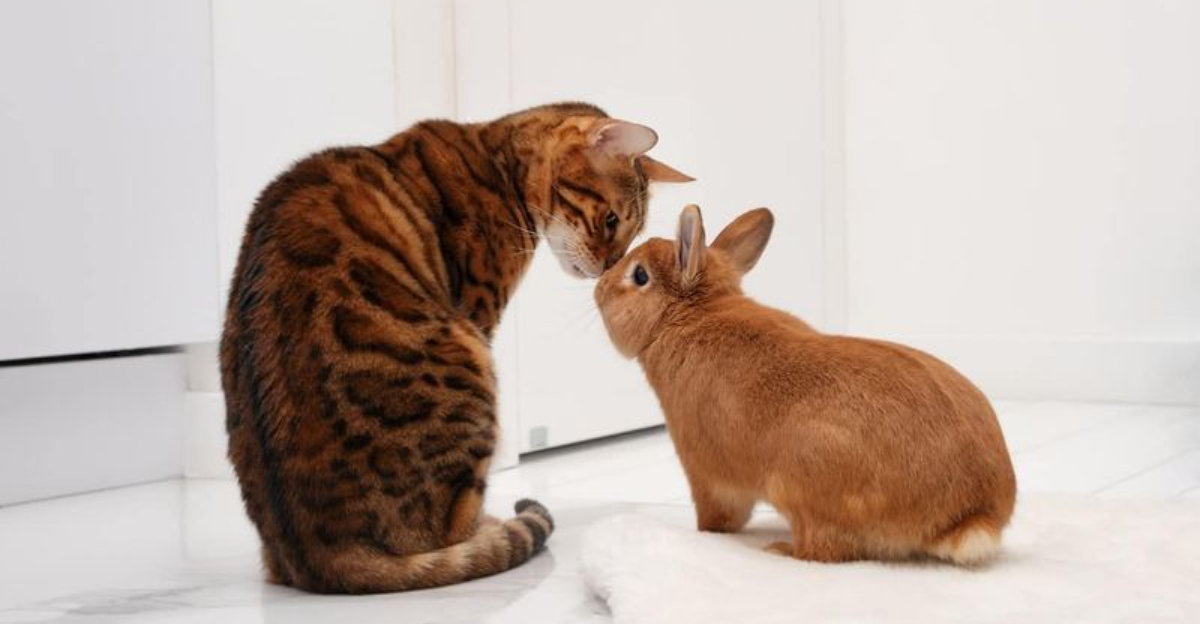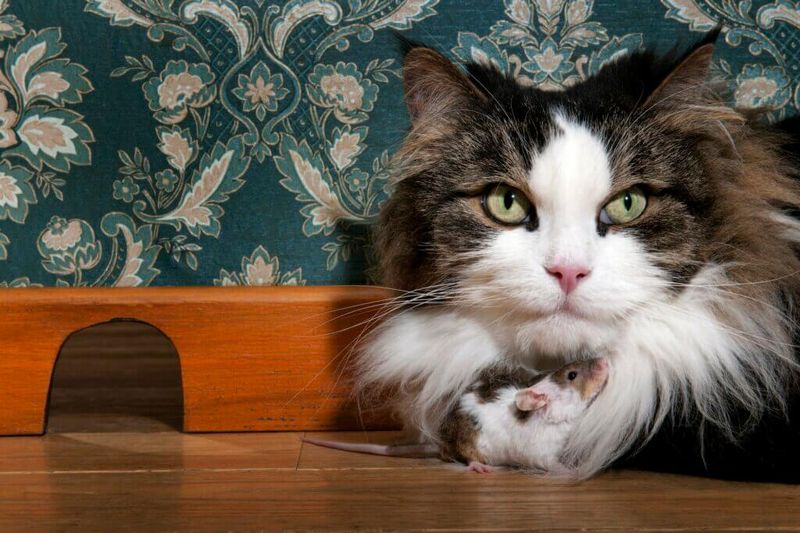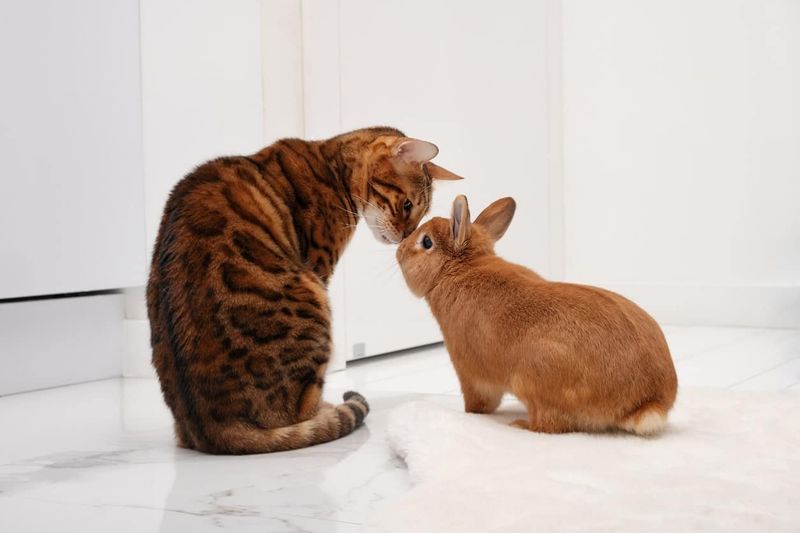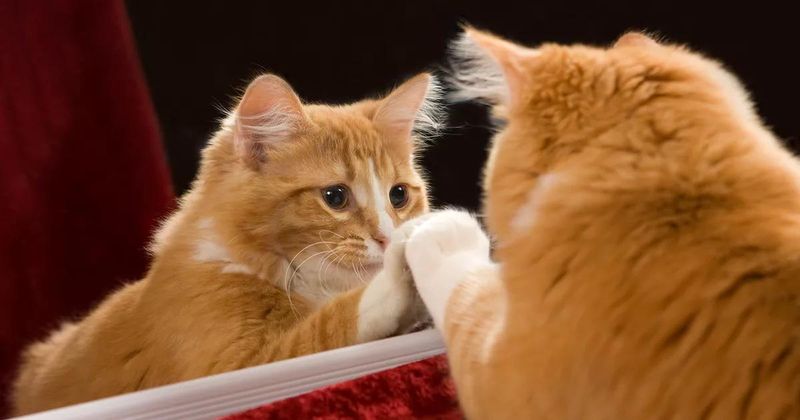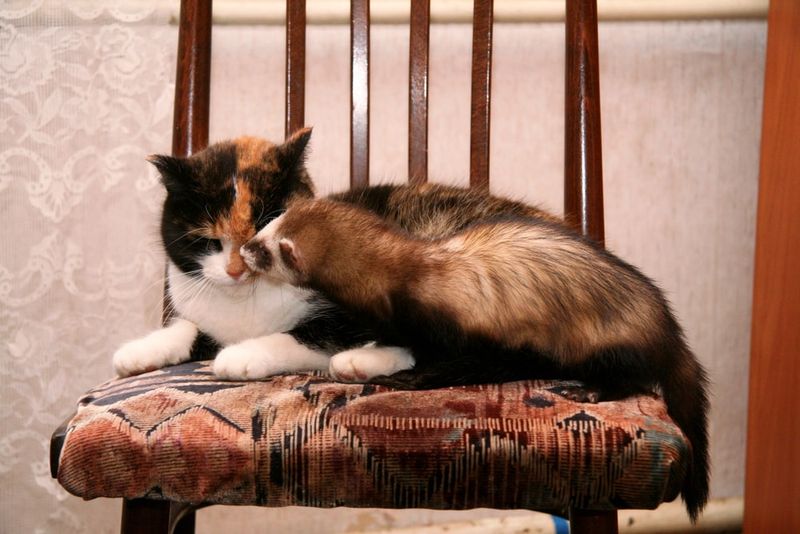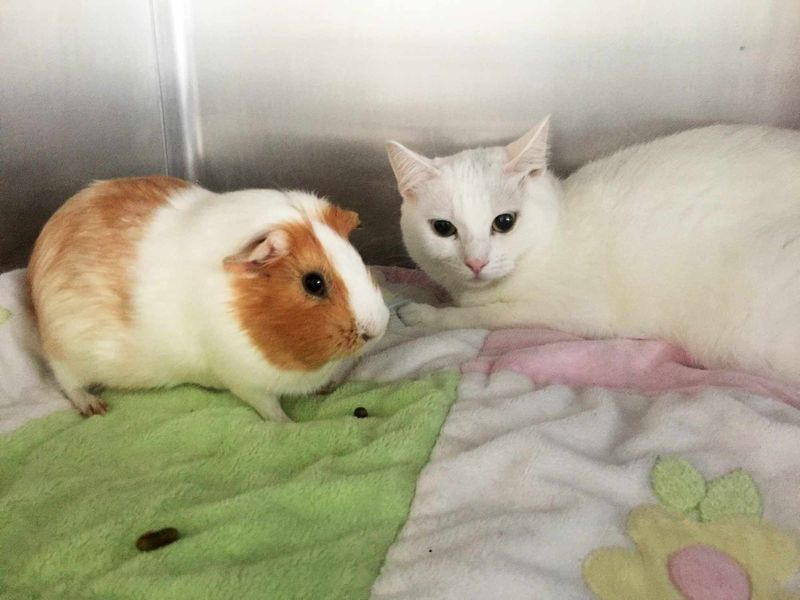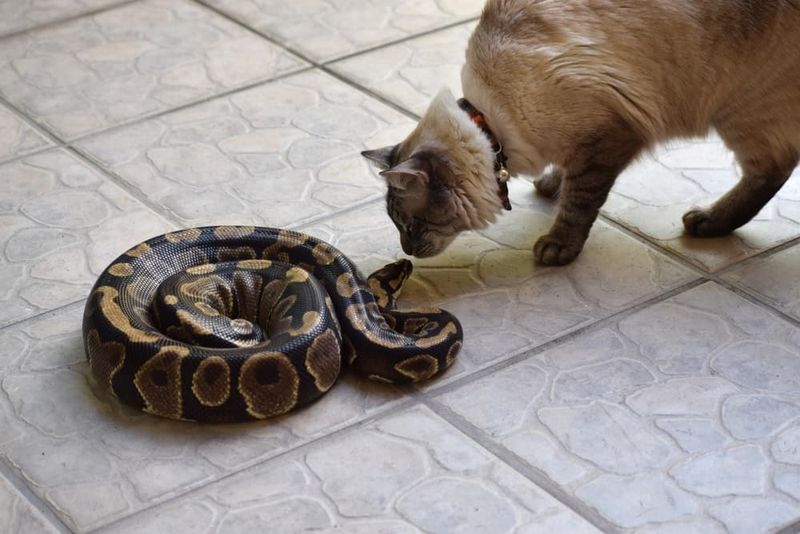📖 Table of Content:
Cats might spend their afternoons lounging in sunbeams or napping in cardboard boxes, but don’t be fooled by their serene exterior. Beneath that calm demeanor lies a vigilant predator, always alert to movement, sound, or the presence of something unfamiliar in its domain. These pint-sized panthers carry thousands of years of hunting instincts, and whether it’s for food, fun, or a perceived threat, their response to certain creatures is swift and unmistakable: challenge accepted.
While some animals in a household are met with passive indifference, others spark an immediate reaction. Real creatures—from the tiniest lizard to the family parakeet—can flip the switch from domesticity to primal behavior. Cats are wired to assess movement, establish territory, and test their reflexes, even when it means staring down a mirror or chasing a gecko across the living room floor.
This isn’t about malice; it’s about instinct. Whether through stalking, pouncing, or just a cold, unblinking stare, cats have a curious mix of confrontation and calculation. They test boundaries with finesse, acting as both hunter and puzzle-solver. What might seem like random acts of mischief to us are, in fact, finely-tuned responses to stimuli. These eight real-life creatures often find themselves in the metaphorical (and sometimes literal) crosshairs of feline focus. Here’s a closer look at each, and why your cat just can’t help but rise to the challenge.
1. Mouse
Nothing grabs a cat’s attention quite like the sudden scamper of a mouse across the floor. Even the most relaxed housecat transforms into a sleek, silent stalker in an instant. Their eyes narrow, body lowers, and tail twitches with tension, tapping into deeply rooted hunting instincts. Mice present the perfect prey: small, fast, and slightly unpredictable. That unpredictable motion is exactly what keeps cats engaged—it mimics wild quarry behavior. Though they may not need to hunt for survival, cats still relish the chase and capture. It’s not uncommon to see them proudly display their prize, toy or not, as if to declare victory in their own little arena.
2. Bird (especially Parakeets or Finches)
Feathers fluttering, high-pitched chirps echoing from above—birds are natural adversaries in a cat’s world. Unlike grounded prey, they occupy vertical space, forcing cats to climb, jump, and stretch their predatory skills. The presence of a caged bird often turns into a game of patience and persistence. Even if the bird is safe, the cat will linger, paw at the bars, or crouch with wide eyes for hours. These aerial creatures represent the unreachable prize, triggering a mix of fascination and low-level frustration. The tantalizing flapping wings ignite fantasies of leaping catches and daring hunts. Birdwatching, for many cats, becomes an obsessive and never-ending mission.
3. Lizard or Gecko
Quick as a flash and often camouflaged, lizards present a unique challenge. They dart under furniture and cling to walls, inviting an extended and agile pursuit. Cats often approach them with calculated curiosity, watching with precision before striking. The sudden burst of movement from a gecko can spark a flurry of paw-swipes and leaps. Even a tail twitch can be enough to set off an hour of feline entertainment. It’s a perfect test of reaction speed and spatial awareness, skills cats naturally love to hone. Once caught, though, the lizard might become more of a novelty than a meal—batted and examined as if it were some twitching toy.
4. Rabbit
Soft and fluffy they may be, but rabbits can bring out a mix of confusion and challenge in cats. Unlike mice, rabbits are larger and tend to move in unpredictable, bounding motions. Cats aren’t always sure whether to stalk, play, or pounce. Many will try each approach in succession, gauging the rabbit’s response with each move. If the rabbit freezes, the cat may creep closer, tail flicking with anticipation. When the rabbit bolts, it can trigger a full chase, though it often ends in hesitation rather than harm. In multi-pet households, the relationship between the two often settles into an uneasy truce marked by periodic skirmishes.
5. Their Own Reflection
Unexpectedly finding an identical intruder in a pane of glass sends some cats into full combat mode. At first, they may freeze, ears forward and body rigid as they assess the “opponent.” When the reflection doesn’t blink or retreat, things escalate. Swatting, puffing up, or meowing in challenge are common responses to this bizarre encounter. What your cat sees is another feline encroaching on its territory—and one that’s strangely synchronized. The more confident the cat, the more likely it is to press nose-to-nose with the mirror and issue a challenge. While it may seem humorous to us, to the cat, it’s a battle of dominance that never ends.
6. Ferret
Bouncy and bold, ferrets don’t back down, which can be equal parts intriguing and alarming to cats. Their unpredictable movements and musky scent make them seem both like prey and predator. Cats often watch from a safe distance at first, unsure how to classify this lively creature. When approached, the encounter turns into a dance of leaps, paw taps, and sudden retreats. Ferrets, ever fearless, may pursue the cat in return, causing a reversal of roles. In many cases, the result is a mutual game of tag with occasional hissing interludes. This dynamic keeps your cat alert, entertained, and ever ready for round two.
7. Guinea Pig
Gentle and docile, guinea pigs don’t pose much of a threat—but their movement and squeaks are enough to stir a cat’s interest. The tiny shuffle of feet and rustling bedding create a background hum of curiosity. Cats often observe quietly at first, ears twitching with each peep. Given the chance, they may poke a paw through the cage or hover overhead like a watchful sentry. While not as fast or erratic as other prey, the guinea pig’s presence is still engaging. It becomes a source of low-stakes entertainment for the cat, a quiet challenge to monitor. Repeated exposure usually results in relaxed indifference—but always with one eye open.
8. Snake (small and non-venomous)
Sliding silently across the ground, snakes are mysterious and mesmerizing to cats. The smooth, fluid movement is unlike any other animal, prompting cautious but intense reactions. A cat will circle a snake with slow, deliberate steps, evaluating every motion. One flick of the tongue or coil of the body can cause a sudden pounce. Instinct warns that the snake may be dangerous, but curiosity compels investigation. This tension turns the encounter into a dramatic standoff—each species sizing up the other. While some cats retreat after a few taps, others can’t resist batting at the tail, ready to conquer the wriggling enigma.
